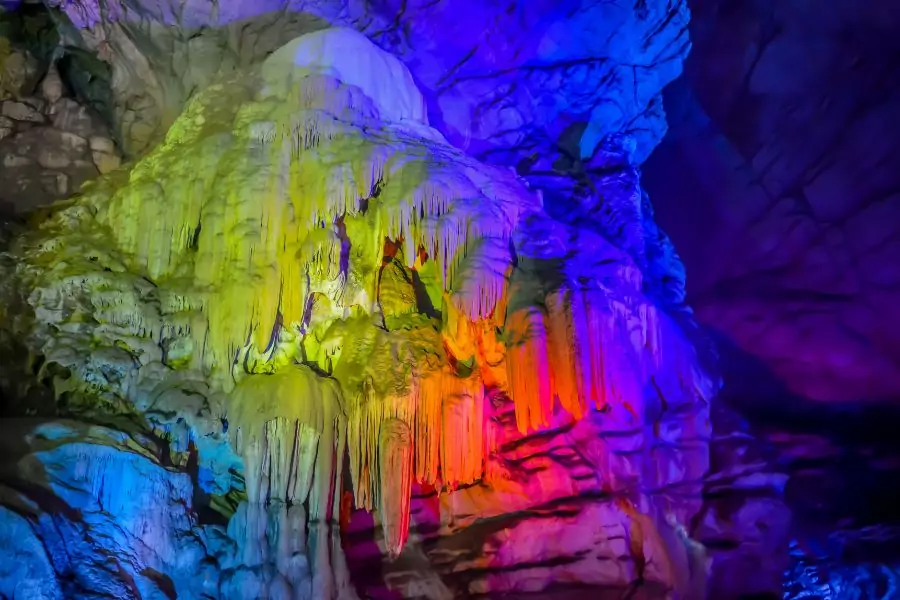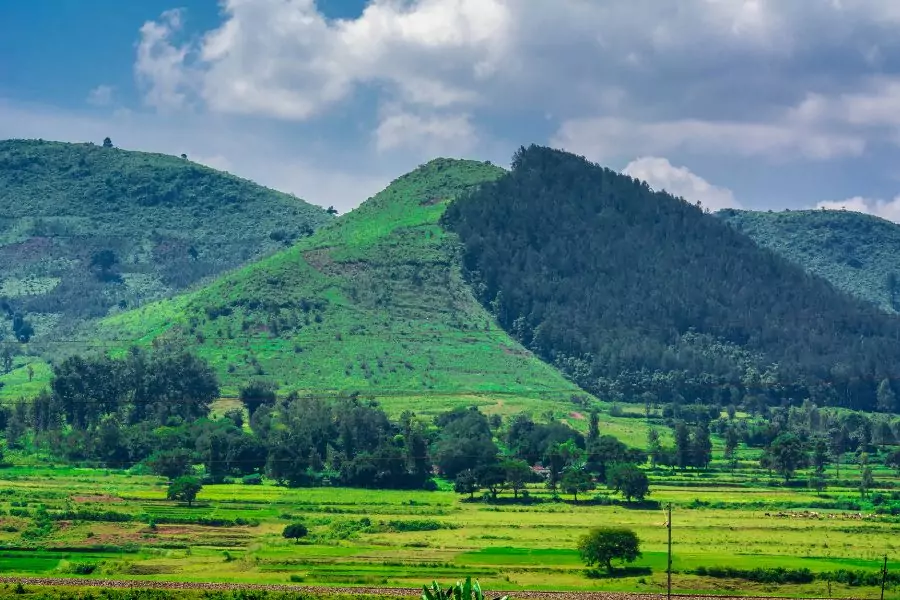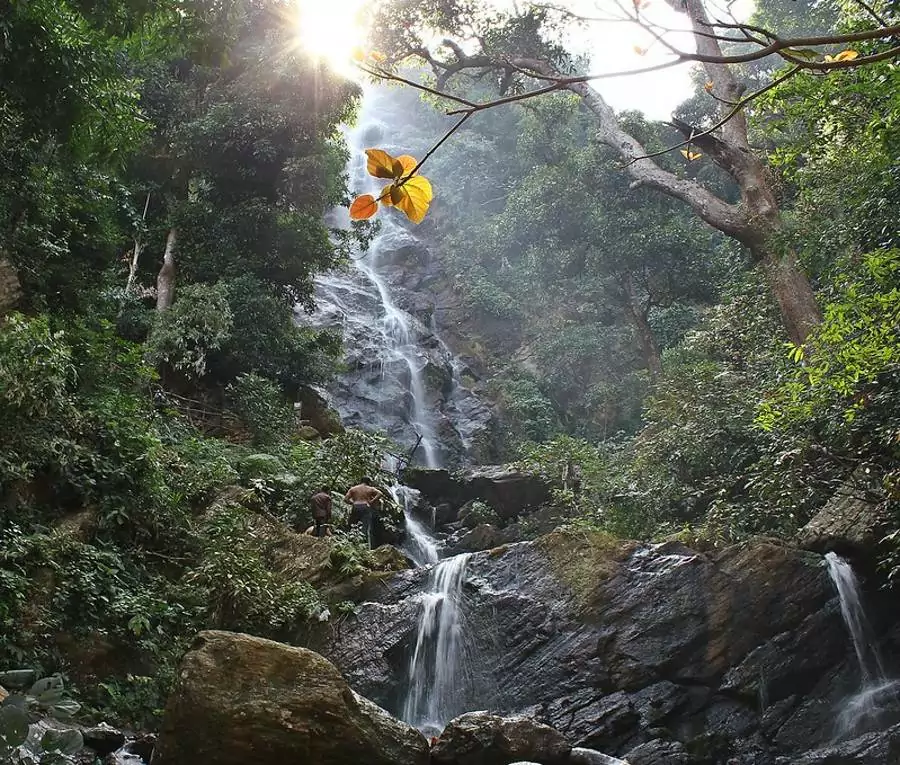Borra Caves – Things to Do at Borra Caves, Trekking, Entry Fees

Nestled in the scenic Ananthagiri Hills of the Araku Valley in Andhra Pradesh, Borra Caves is one of India’s most remarkable natural formations. Discovered in 1807 by British geologist William King, these limestone caves attract both tourists and geologists, drawn to their unique stalactites and stalagmites. Spanning a vast area and located at an elevation of around 705 meters above sea level, Borra Caves offer an enchanting combination of natural beauty and mystery. Whether you’re an adventure enthusiast, nature lover, or history buff, a visit to Borra Caves promises an unforgettable experience.
In this travel guide, we’ll dive into the history, significance, and must-know facts about Borra Caves, along with tips for your visit.
Introduction to Borra Caves

The Borra Caves are located approximately 90 km from Visakhapatnam and are one of the largest caves in India. These caves are believed to be around 150 million years old, formed due to the natural erosive action of the Gosthani River on the limestone deposits. The caves, with their intricate formations of stalactites and stalagmites, hold deep geological, historical, and cultural significance.
Stretching across a depth of about 80 meters, Borra Caves are a prime example of karst formations, featuring mesmerizing natural sculptures created by the deposition of minerals over millennia. The unique formations inside the cave make it a must-visit destination for travelers and explorers.
Geological Significance
Borra Caves are located in the Eastern Ghats, which consist mainly of limestone. The caves were formed due to continuous chemical weathering of limestone by water, mainly from the Gosthani River that flows through the area. This slow process of mineral dissolution created the caves’ vast network of chambers and passageways.
The stalactites (hanging formations) and stalagmites (rising formations) inside the caves are composed of calcium carbonate. Over millions of years, these mineral deposits have formed spectacular shapes and figures, some resembling animals, humans, and even deities. Due to their geological significance, the caves attract scientists and researchers, who study these ancient structures to better understand the Earth’s history.
Formation and Features
Borra Caves are the result of a natural phenomenon known as karst topography, where the action of water on soluble rock (such as limestone) creates underground caves and sinkholes. The stalactites and stalagmites inside the caves are formed due to the continuous dripping of water that carries calcium carbonate, which deposits slowly to create these magnificent structures.
Some of the formations inside Borra Caves are quite fascinating and have been given names based on their shapes, such as Shivalinga, Crocodile, and Mother and Child. The highlight is the stalagmite resembling a Shiva Linga, which holds religious significance for the locals. The caves are also home to several small chambers and caverns, each displaying unique formations that captivate visitors.
One of the most enchanting aspects of Borra Caves is the natural play of light and shadows inside. The Andhra Pradesh Tourism Department has installed artificial lighting inside the caves, illuminating the intricate formations and creating a mystical atmosphere.
Cultural and Historical Importance
Apart from their geological importance, Borra Caves also hold cultural and religious significance. According to local tribal legends, the Gosthani River, which flows near the caves, emerged from a cow’s udder, leading to the discovery of the caves. Over time, this legend added to the spiritual significance of the caves, especially the stalagmite resembling Shiva Linga.
Many visitors, especially those from nearby villages, consider the caves a pilgrimage site. The presence of a small Shiva temple near the entrance also enhances its religious importance. Festivals like Shivaratri attract numerous devotees to the cave, seeking blessings and paying homage to Lord Shiva.
Things to Do at Borra Caves

1. Explore the Caves:
Visitors can walk through the massive chambers and corridors of Borra Caves. With the lighting inside the caves, the formations appear even more spectacular, offering plenty of photo opportunities. The mystical ambiance created by the lights and shadows will leave you awestruck.
2. Enjoy the Scenic Views:

Borra Caves are located in the picturesque Ananthagiri Hills, surrounded by lush greenery and breathtaking landscapes. The cool climate and scenic beauty of the region make it an ideal spot for nature walks and photography.
3. Trekking and Adventure:
If you’re an adventure enthusiast, the Ananthagiri Hills around Borra Caves offer trekking opportunities. Trekking through the forested areas provides a closer look at the natural beauty and wildlife of the region.
4. Visit Tribal Villages:
The region around Borra Caves is home to several tribal communities. Visitors can take guided tours to these villages to learn about the culture, traditions, and way of life of the indigenous people.
5. Taste Local Delicacies:
After a day of exploration, you can savor the local cuisine offered by food stalls around the caves. Traditional Andhra Pradesh snacks and beverages are popular with tourists.
How to Reach Borra Caves
Borra Caves are well-connected by road and rail, making it accessible for tourists from different parts of the country.
- By Road: Borra Caves is located about 90 km from Visakhapatnam and can be reached via private taxis or buses. The scenic drive through the Eastern Ghats adds to the journey’s charm.
- By Rail: The nearest railway station to Borra Caves is Borraguhalu Railway Station, which is just a short distance from the caves. The station lies on the Kothavalasa-Kirandul railway line.
- By Air: The nearest airport is Visakhapatnam Airport, about 90 km away, from where you can hire a taxi or board a bus to reach the caves.
Best Time to Visit
The best time to visit Borra Caves is during the winter months from November to February. During this period, the weather remains cool and pleasant, perfect for exploring the caves and the surrounding hills. The monsoon season (June to September) is also a good time, as the lush greenery adds to the natural beauty of the area, though the region receives moderate rainfall.
Avoid visiting during the summer (March to May) as temperatures can rise, making the exploration uncomfortable.
Nearby Attractions
Borra Caves is located in a region rich in natural beauty and tourist attractions. Some nearby spots worth visiting include:
1. Araku Valley:

Located about 30 km from The Caves, Araku Valley is a popular hill station known for its scenic beauty, coffee plantations, and tribal culture.
2. Katiki Waterfalls:

A short trek from The Caves leads to the Katiki Waterfalls, where you can witness the cascading waters amidst dense forests. It’s an ideal spot for adventure lovers.
3. Tyda Nature Camp:

Tyda is a popular eco-tourism camp, located about 20 km from Borra Caves. It offers nature walks, bird-watching opportunities, and a peaceful retreat amidst the wilderness.
Visitor Information
- Entry Fees:
Indian Tourists: INR 60 per person
Foreign Tourists: INR 300 per person
Children (below 5 years): Free
Camera charges: INR 100
Video camera charges: INR 1000 - Timings:
Open daily from 10:00 AM to 5:30 PM - Duration of Visit:
On average, it takes around 1.5 to 2 hours to explore the caves thoroughly.
FAQs about Borra Caves
1. Is The Caves safe for children and elderly visitors?
Yes, Borra Caves are safe for all age groups, but visitors need to be cautious as the ground inside can be slippery. Proper footwear is recommended.
2. How long does it take to explore The Caves?
A typical visit to Borra Caves takes about 1.5 to 2 hours.
3. Are there any guided tours available?
Yes, there are local guides available at the caves who can provide detailed insights into the formations and the history of the caves.
4. What is the best time to visit?
The best time to visit is during the winter months (November to February), as the weather remains cool and pleasant.
5. Can we take photographs inside The Caves?
Yes, photography is allowed inside Borra Caves, but there is an additional fee for carrying cameras and video equipment.


